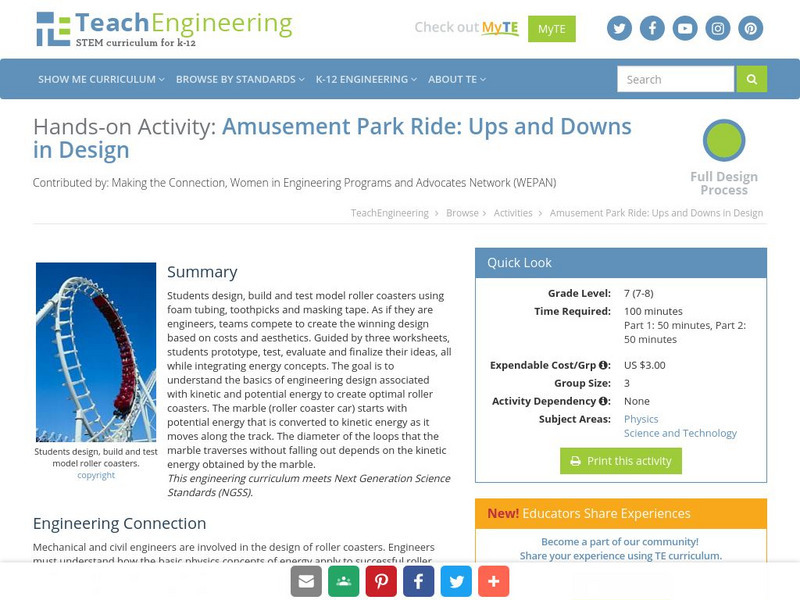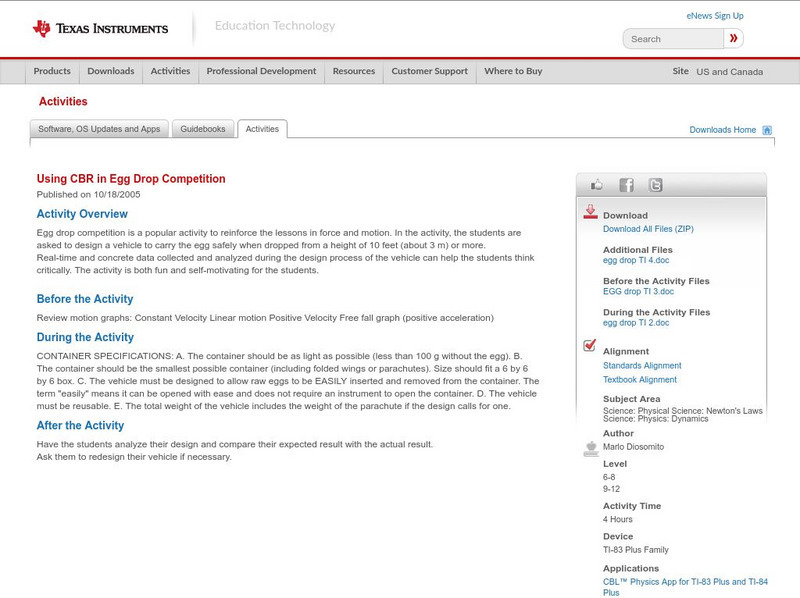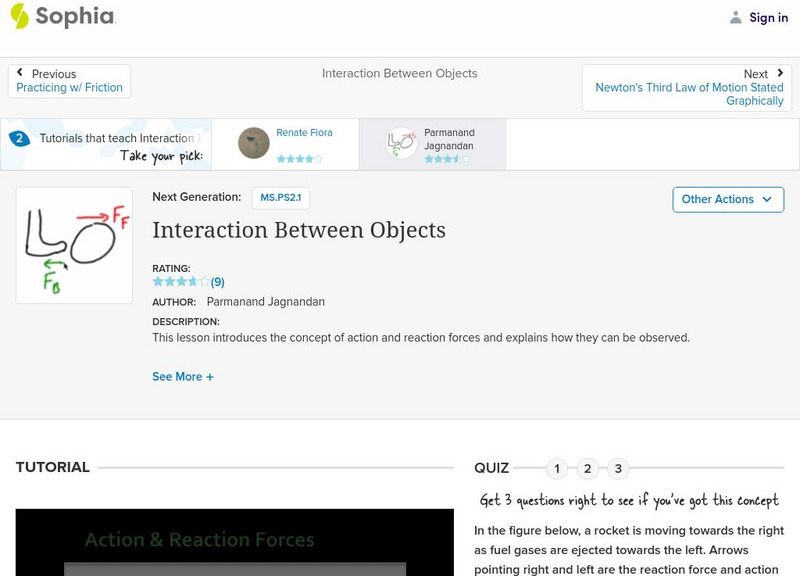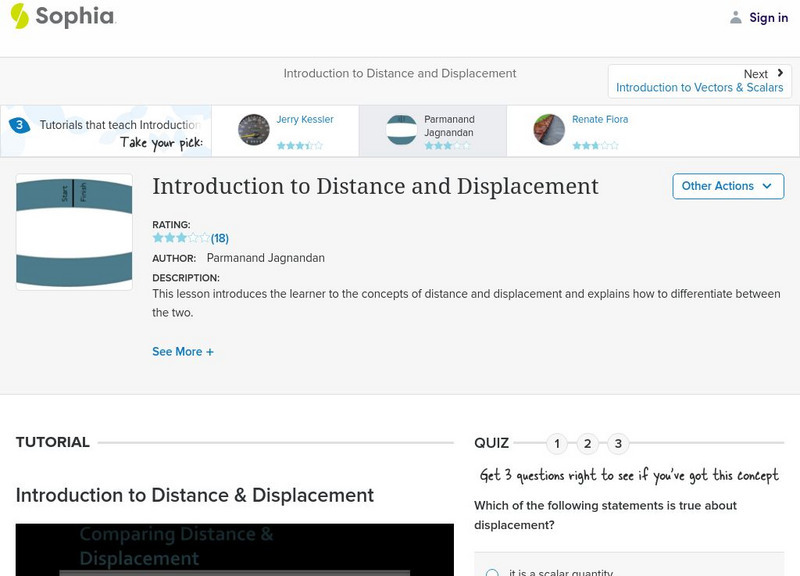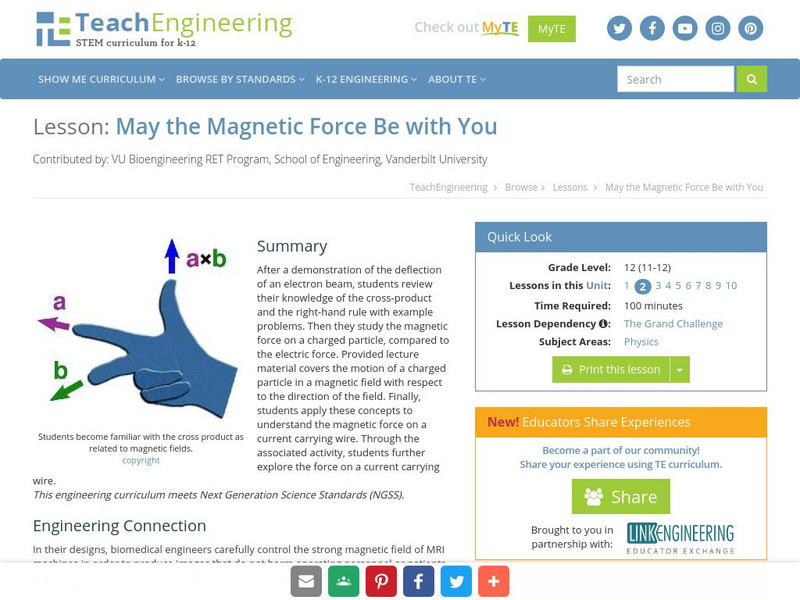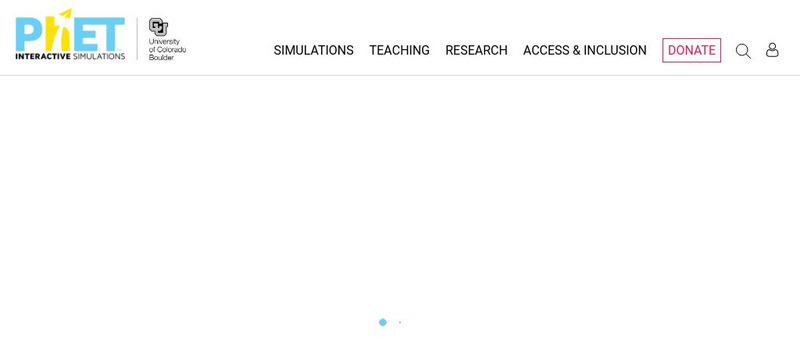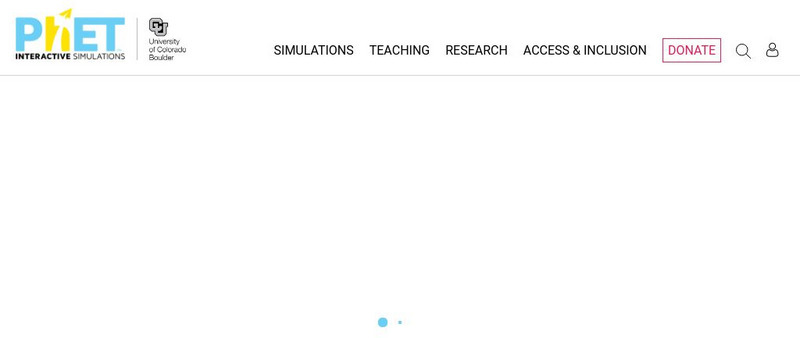Hi, what do you want to do?
Physics Classroom
The Physics Classroom: Describing Motion With Words
This lesson from the Glenbrook South High School gives a nice review and detailed explanation of velocity, speed, distance, displacement, and acceleration. A good introduction to the "language of Kinematics."
TeachEngineering
Teach Engineering: Amusement Park Ride: Ups and Downs in Design
This unit has students design and build foam tubing roller coasters. The design process integrates energy concepts as they test and evaluate their designs that address the task as an engineer would. The goal is for students to understand...
CK-12 Foundation
Ck 12: Physical Science: Newton's Second Law
[Free Registration/Login may be required to access all resource tools.] Newton's second law of motion and the effects of force and mass on acceleration. Direct and inverse relationships between force, mass and acceleration.
Texas Instruments
Texas Instruments: Using Cbr in Egg Drop Competition
Egg drop competition is a popular activity to reinforce the lessons in force and motion. In the activity, the students are asked to design a vehicle to carry the egg safely when dropped from a height of 10 feet (about 3 m) or more....
TED Talks
Ted: Ted Ed: Would You Weigh Less in an Elevator?
Video that uses an elevator in motion to describe the relationship among weight, gravity, and relative motion. [3:36] Includes a short quiz and a list of additional resources to explore.
Science Buddies
Science Buddies: Two Stage Balloon Rocket
Middle schoolers will build a multi-stage balloon rocket that they can launch across the classroom while learning about real space flight and Newton's laws of motion.
Sophia Learning
Sophia: Interaction Between Objects: Lesson 1
This lesson introduces the concept of action and reaction forces and explains how they can be observed. It is 1 of 2 in the series titled "Interaction Between Objects."
Sophia Learning
Sophia: Introduction to Distance and Displacement: Lesson 3
This lesson introduces the learner to the concepts of distance and displacement and explains how to differentiate between the two. It is 3 of 3 in the series titled "Introduction to Distance and Displacement."
Sophia Learning
Sophia: Introduction to Distance and Displacement: Lesson 1
This lesson introduces the learner to the concepts of distance and displacement and explains how to differentiate between the two. It is 1 of 3 in the series titled "Introduction to Distance and Displacement."
Better Lesson
Better Lesson: What Caused That Change in Motion?
Third graders will observe balls changing direction and determine what made the ball's motion change. They will also use a digital resource to change the position of a digital ball.
Discovery Education
Discovery Education: Motion, Forces, Energy and Electricity
Help your students understand motion and force through the construction of catapults.
TeachEngineering
Teach Engineering: May the Magnetic Force Be With You
This lesson plan begins with a demonstration of the deflection of an electron beam. Learners then review their knowledge of the cross product and the right hand rule with sample problems. After which, students study the magnetic force on...
University of Colorado
University of Colorado: Ph Et Interactive Simulations: Projectile Motion
An interactive simulation that teaches about kinematics, air resistance, and parabolic curve by shooting a car out of a cannon while trying to hit a target. Observe how changes in angle, initial speed, mass, air resistance, and drag...
University of Colorado
University of Colorado: Ph Et Interactive Simulations: Gravity Force Lab
An interactive simulation that teaches about gravitational force, Newton's Third Law, and force pairs by varying properties affect the gravitational force exerted between two objects. This simulation can either be downloaded or played...
Physics Classroom
The Physics Classroom: Static Electricity: Newton's Laws and Electrical Force
How do Newton's Laws connect with electrical forces? This overview illustrates how they blend together. After studying this explanation, test understanding with the review questions provided.
CK-12 Foundation
Ck 12: Torque
[Free Registration/Login may be required to access all resource tools.] In this online lesson learners will learn about Torque and how to calculate Torque in various situations.
Physics Classroom
The Physics Classroom: Circular and Satellite Motion: Athletics
Students investigate a variety of applications of circular motion principles to the world of sports, and use Newton's laws to mathematically analyze such motions. The emphasis will not be upon an investigation of the details of every...
SMART Technologies
Smart: Science Choice Board Newton's Laws of Motion
Students level up learning by completing Newton's Laws of Motion task cards including all levels of Bloom's taxonomy.
Sophia Learning
Sophia: Friction: Lesson 4
This lesson will introduce the concept of friction and explain how it can affect forces. It is 4 of 5 in the series titled "Friction."
TeachEngineering
Teach Engineering: Flocculants: The First Step to Cleaner Water!
Learners experience firsthand one of the most common water treatment types in the industry today, flocculants. They learn how the amount of suspended solids in water is measured using the basic properties of matter and light. In...
Physics Classroom
The Physics Classroom: Newton's Laws of Motion
Use this outline to find out about Newton's Laws of Motion. Use the different lesson plans covering the laws of motion to learn more.
Khan Academy
Khan Academy: Activity: Frictional Force Experiment
A lesson about friction can be found on this website. Students will experiment to see how motion and frictional force affect the game of football.
Other
Bscs: Forces Lesson 1: What Makes Something Start to Move?
Through hands-on activities, this lesson will show students that a force is a push or a pull and forces cause changes in motion. Included are a minute-by-minute lesson plan, activities, and teacher discussion points and questions.
TeachEngineering
Teach Engineering: Up, Up and Away! Airplanes
The airplanes unit begins with a lesson on how airplanes create lift, which involves a discussion of air pressure and how wings use Bernoulli's Principle to change air pressure. Following the lessons on lift, students explore the other...






